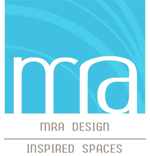Today’s interior designers are going beyond just “green” design and are creating interior spaces that not only preserve the environment, but are conducive to the health of the humans that occupy these spaces. These principles apply to all spaces: retail, office, workplace, hospitality as well as institutional.
What is a healthy building interior? The industry started using this definition in 1995: “ A healthy building is one that adversely affects neither the health of its occupants nor the larger environment.”
Here are just some of the some of the key factors that your interior designer will consider when creating a healthy building interior:
1. Human factor:
Unfortunately for us there are many elements and materials that make buildings safe and durable, however these are not always the best for human environments. Some important human factors to consider are the use of natural lighting, spatial circulation, extra fresh air intakes and low-emitting and non-toxic materials.
2. Materials
The Interior Designer plays a key's role in the selection of all interior building materials and finishes. While there are not always perfect choices to be had, the design professional can significantly reduce the number of VOCs (volatile organic compounds) and material emissions in the space. These emissions can “add up” and produce a burden on the health of human body with prolonged exposure. These can come from flooring, paint, furniture and other interior materials.
3. Role of government regulations
Typically, the government is behind on the latest information on chemicals and materials used for interior construction. For example, the EPA currently allows more than 82,000 chemicals for use in the American market, and only 650 of these are monitored by the EPA. What’s more, is that only 200 of these chemicals have been tested for threats to human health. They are also slow to act. In 1949 lead was identified as a health risk to humans, but was finally banned in 1970!
4. Lighting
Both the planning and type of lighting can have a dramatic impact on the human aspect of any interior space. The quality and color temperature affect human behavior and productivity. The new LED technology solves this problem by not only consuming much less energy than fluorescent tubes, it does so without the toxic mercury that all fluorescent fixtures contain.
5. VOC’s, BPA, formaldehyde, phthalates, mercury
These are just some of the chemicals that a qualified interior designer will seek to avoid. All of these can leach into the interior environment and subsequently into our bodies. With current building methods it is not possible to get a perfect score on all of these, however, a qualified professional can drastically reduce the risk of exposure to these chemicals for their clients.
